Home / Project Builder Overview / Project Builder / Project Builder Overview
Project Builder Overview
Putting project tasks and planning information inside Sparx Enterprise Architect (EA) helps teams keep everything in one place.
Instead of using separate tools or spreadsheets to track what needs to be done, who is doing it, and when it’s due, all of that can be added to the EA model. With simple connections to manage scheduling of events and dependencies, Project Builder calculates completion dates for projects with single or multiple workflows. This makes it easier to manage and share.
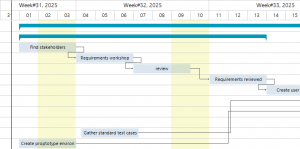
Now that EA has a full project management facility, everyone on the team can see the latest project schedule information alongside the requirements, architecture, design or other EA content. This helps people stay up to date and makes it easier to understand how the project relates to what is already in EA. You can link project tasks to things like requirements, components, or stakeholders, so it is clear what each task is for and why it matters.
You can see this related information either in a normal EA diagram:
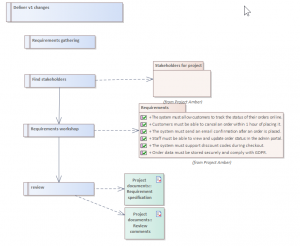
..or directly in the Gantt view:
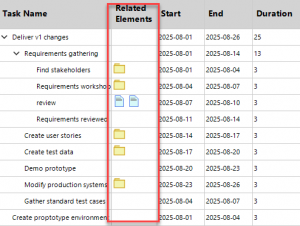
The real benefit is that all the project details live together with the model. This means changes are easier to manage, and you don’t need to jump between tools to see what is affected. Instead of planning and delivery being separate, they’re connected. This helps teams work more smoothly, avoid confusion, and stay focused on what matters most.
And you can also use standard EA features to show that other essential project management view: the Network Diagram:
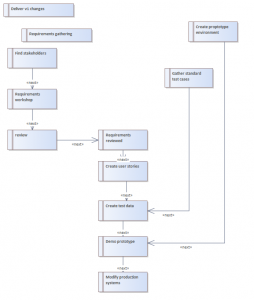
Lots of project managers use this view alongside the Gantt chart: the network diagram concentrates on the connections between tasks, and not on their duration or timings. A great way to get started.
Add related EA elements onto this diagram, for a single page view of your project activities and deliverables.
And finally, there is also the standard EA Project Browser, which is good at showing the parent/child relationships between tasks:
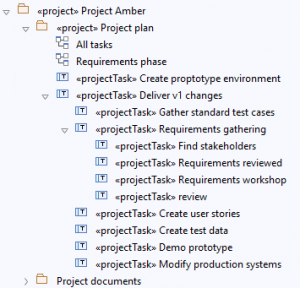
So Project Builder makes maximum use of the EA features you already know about. The critical new feature is the Gantt chart, which helps you to plan and manage the dependencies and timings of your project.